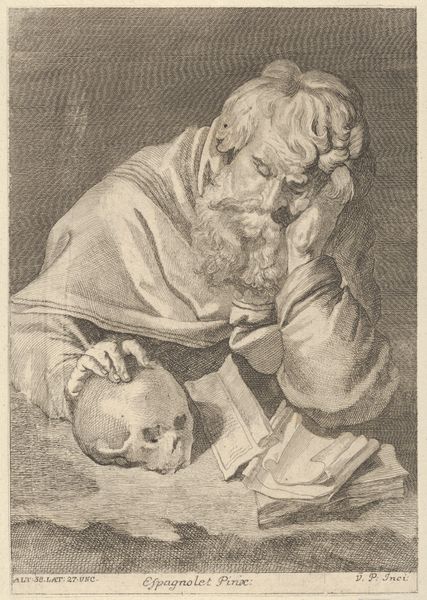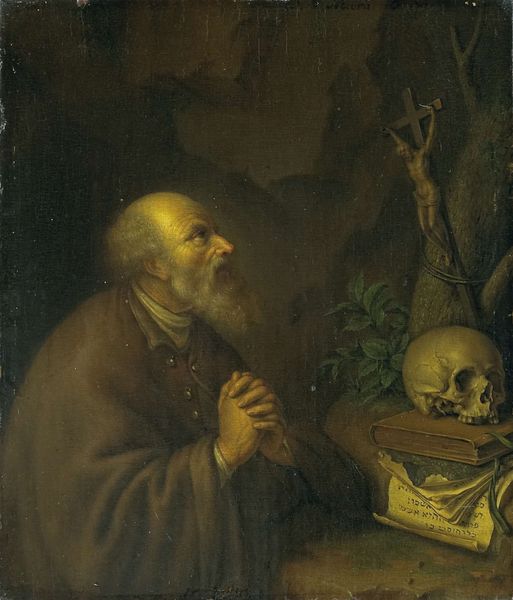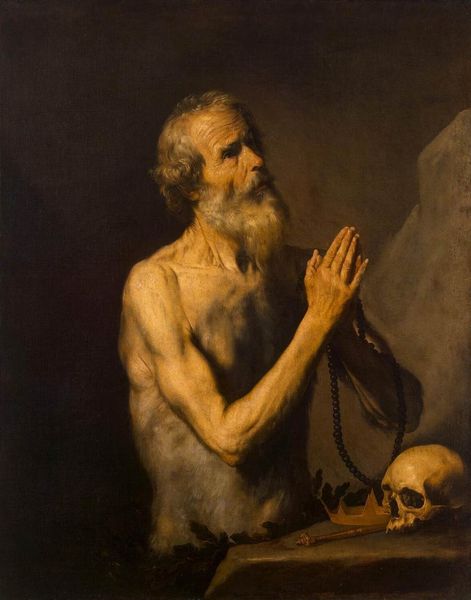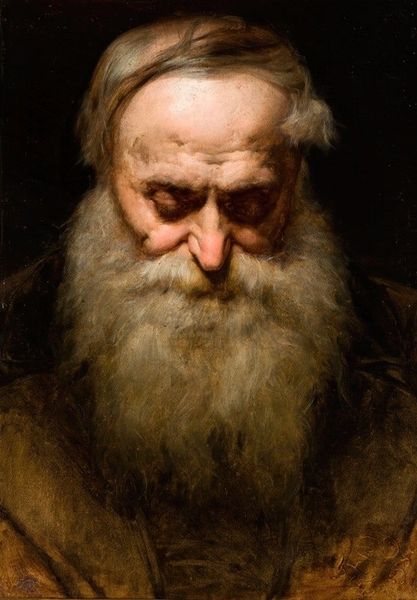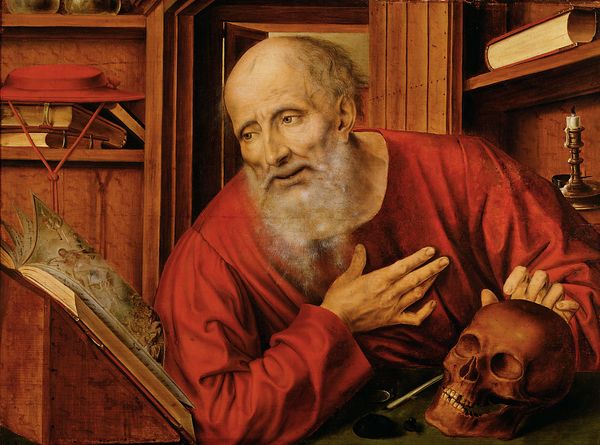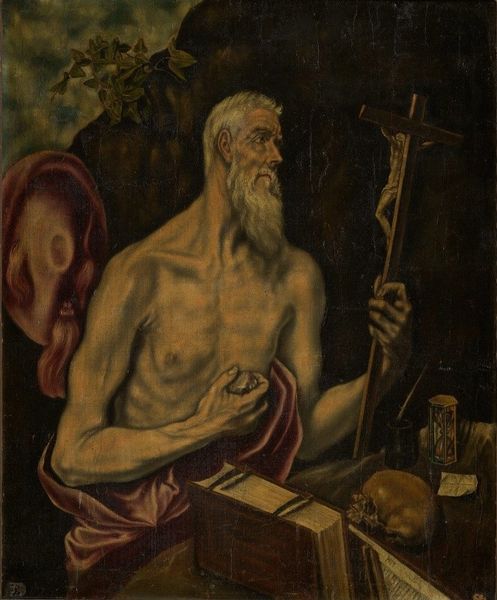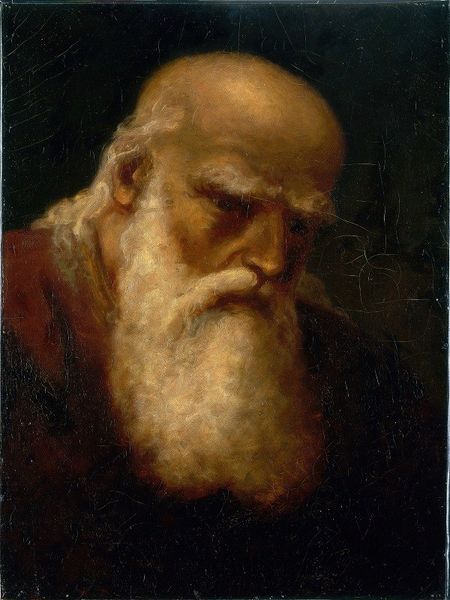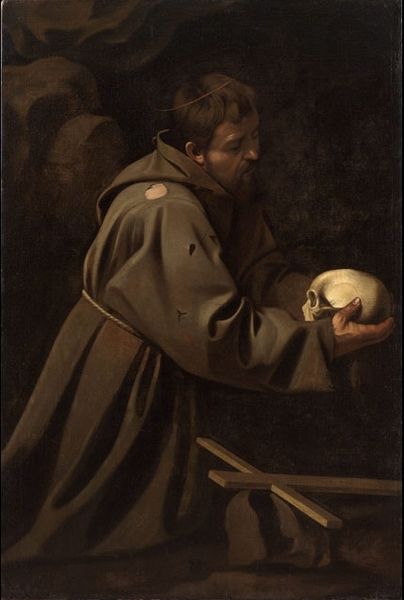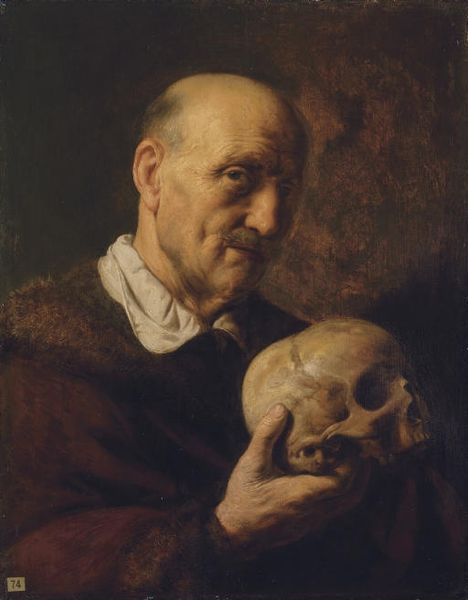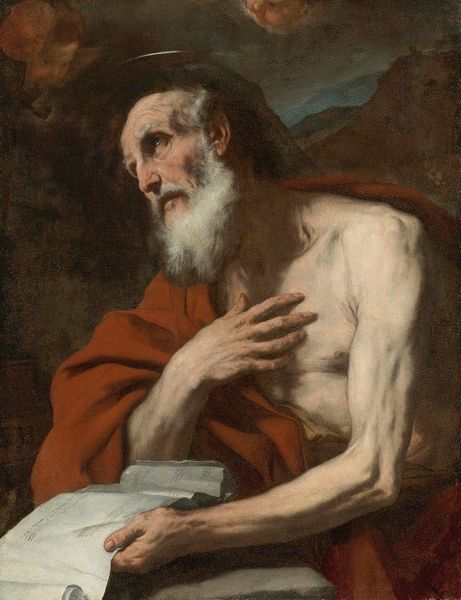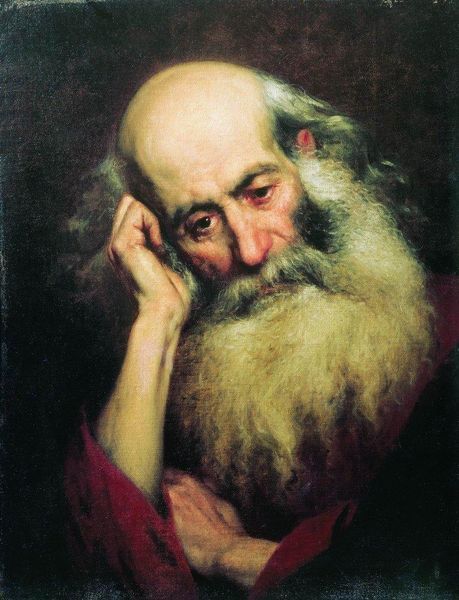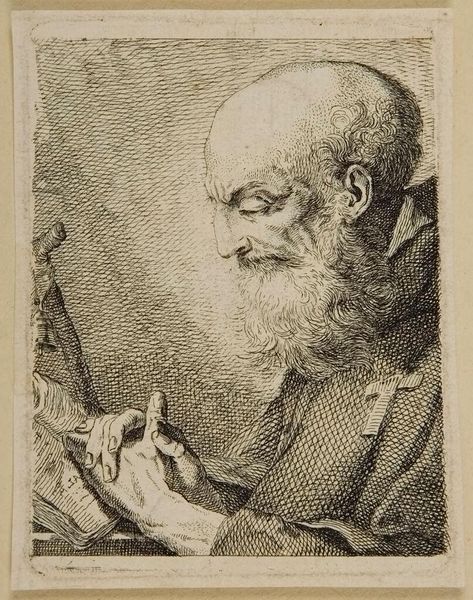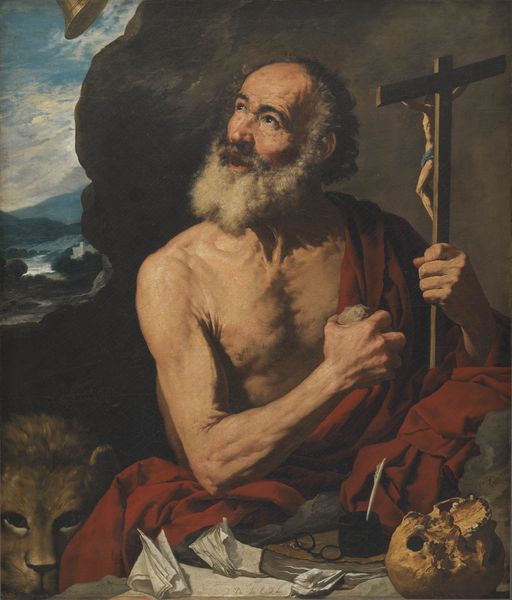
painting, oil-paint
#
portrait
#
baroque
#
painting
#
oil-paint
#
momento-mori
#
chiaroscuro
Copyright: Public domain
Curator: Today we are observing "Democritus with a Skull," painted by Jan Cossiers around 1615. Editor: My first impression? Melancholy. The stark contrast between the shadowed background and the illuminated figure creates an intense, almost theatrical atmosphere. Curator: Indeed. Cossiers places Democritus, an ancient Greek philosopher, within the Baroque fascination with mortality and the "memento mori" tradition. The painting encourages contemplation on death. Editor: And structurally, consider how the curve of the skull echoes the shape of Democritus’s own head, suggesting an intimate connection. The light rakes across his face and beard, drawing the viewer's eye towards the central theme. It’s masterful chiaroscuro. Curator: I agree, but the composition extends further: Democritus, known for his atomic theory, and whose ideas led to scientific advancements, now confronts the end of his being. It’s powerful to view this work through the lens of social and philosophical change of that era. Editor: Certainly. Also notice the artist’s technique; the application of oil paint, creating different textures to enhance realism. The texture of the beard stands in contrast to the smooth surface of the skull, which creates more depth. Curator: Exactly! Beyond death itself, the piece also urges viewers to recognize a shared experience and ask relevant questions about being versus non-being, identity, the soul, etc. Editor: What strikes me is how effectively Cossiers balances light and darkness, structure and narrative to produce this dramatic portrayal. A potent mix. Curator: He captured the spirit of the time while prompting ongoing inquiries about mortality. Editor: Yes, this portrait makes you want to see life beyond shapes.
Comments
No comments
Be the first to comment and join the conversation on the ultimate creative platform.
